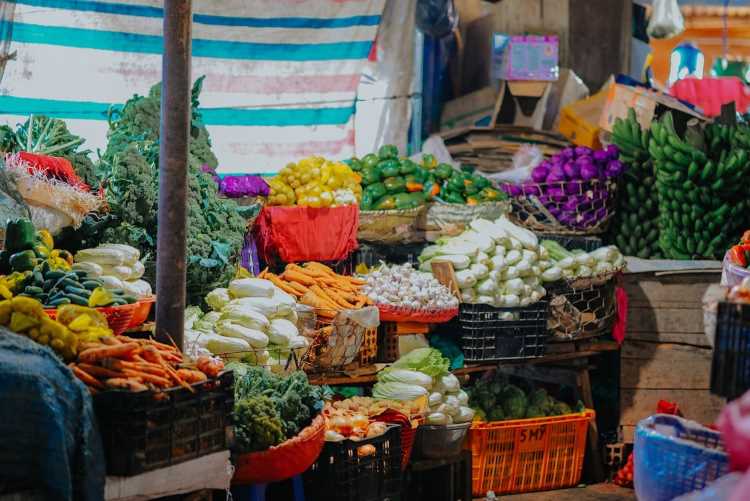
The recent festive season has brought some positive signs for the Indian economy, with several indicators suggesting a resurgence in consumer sentiment, even as food inflation remains a pressing challenge. GST collections rebounded strongly in October, showing an 8.9% increase from the previous year to reach Rs 1.87 lakh crore. Carmakers Maruti Suzuki, Tata Motors, and Mahindra & Mahindra posted record sales last month, further emphasising the economic momentum. Additionally, UPI reported a significant uptick in transactions, totalling 16.58 billion in October — up 45% year-on-year — indicating robust digital payment activity.
Despite the positive sentiment, high food inflation remains a critical concern, with September seeing a nine-month high figure of 9.24%. This surge has primarily been driven by essential food items such as vegetables, cereals, and pulses, which have experienced substantial price increases. These rising prices not only strain household budgets but also add inflationary pressure across the economy, potentially impacting discretionary spending. Persistent food inflation could pose challenges to sustaining India’s growth trajectory.
READ | Stability shaken: Japan’s economy to pay the price of political turmoil
Driving forces behind rising food inflation
Food inflation in India is influenced by multiple factors. One significant cause is erratic climate patterns and seasonal changes, which can directly impact crop yields. Unpredictable monsoons and extreme weather events, such as floods and droughts, disrupt crop cycles, reduce supply, and lead to higher prices, particularly in staple vegetables and cereals. These factors are joined by rising input and production costs. Fertiliser, seed, labour, and transportation costs have all increased, influenced by both domestic and global market dynamics, with supply chain disruptions since the COVID-19 pandemic exacerbating these cost pressures. Speculative hoarding also plays a role, with traders often stockpiling goods in anticipation of higher prices, creating artificial scarcity and further driving prices up.
Global market forces have contributed as well. Events like the Russia-Ukraine conflict disrupted the supply of essential commodities such as wheat, vegetable oil, and fertiliser, leading to price shocks in the domestic market. Shifts in agricultural production patterns, with farmers moving from staple crops to more profitable commercial crops, have also led to reduced availability of basic food items. This change in crop focus increases dependency on imports, exposing India to global price volatility and potential supply shortfalls.
Economic impact of food inflation
High food prices exert a multifaceted economic toll. A major consequence is the decline in consumer purchasing power, as families must allocate a larger portion of their budget to food, leaving less for discretionary spending. This constraint disproportionately affects lower-income groups, where food expenses consume a significant share of their consumption basket. Additionally, rising food prices can lead to higher production costs across various sectors, as manufacturers face increasing expenses for labour, raw materials, and inputs. This “cost-push inflation” creates a feedback loop that amplifies inflationary pressures across the economy, with workers demanding higher wages to keep pace with the rising cost of living, further compounding inflation.
Persistent food inflation also threatens food security and exacerbates inequality in food access, particularly for lower-income households and rural communities. Rising food prices contribute to malnutrition as access to essential nutrients becomes increasingly unaffordable, underscoring the urgency for interventions to control inflation and stabilise food availability.
Corporate influence on food inflation
Amid these complex dynamics, corporate pricing practices may be contributing to food inflation. As wages in food manufacturing and retail have risen faster than in other sectors, corporations have passed on these costs to consumers. Corporations, particularly in the grocery retail sector, are using inflation as an opportunity to increase profit margins, especially for inelastic demand items like food. Grocery chains have been accused of keeping prices high, despite some relief in production costs, to maximise profit margins.
However, economists advise caution in placing sole blame on corporate practices. Food producers and retailers operate within intricate cost structures, and while some firms may have leveraged inflation to sustain profitability, data indicates that grocery markups alone do not fully account for the sharp rise in consumer prices. The broader trend appears to result from a blend of legitimate cost increases, market forces, and, in some cases, profit-driven pricing strategies.
Policy responses and strategies
Given the profound effects of food inflation, both policy interventions and structural reforms are essential to control prices and maintain food security. One strategic response is to bolster agricultural resilience by promoting climate-resistant crops and strengthening irrigation infrastructure. Policies that provide subsidies for climate-resilient seeds and support sustainable farming practices could mitigate crop losses due to erratic weather and help maintain stable supply levels.
Investment in cold storage, transportation, and supply chain infrastructure is another critical step. Improved storage and logistics facilities would reduce post-harvest losses, stabilise prices, and ensure steady supplies, even during seasonal fluctuations. Furthermore, enhancing market transparency and implementing anti-hoarding measures can help reduce artificial scarcity. Stringent penalties for hoarding and robust oversight in the food supply chain can ensure more equitable access to essential items.
Supporting farmers with technology and access to new markets can also promote stability. Modernising agriculture through digital tools and precision farming can boost yields and lower production costs. Providing training on digital platforms for market access would allow farmers to secure fair prices and reduce dependency on intermediaries, while cold storage and warehouse facilities would enable them to hold crops for optimal pricing.
Monetary policy also plays a crucial role in managing food inflation. The Reserve Bank of India (RBI) has taken a vigilant stance to keep inflation within its 2-6% target range, ready to adjust interest rates if needed. As food inflation impacts core inflation indirectly, the RBI’s cautious approach to monetary policy is essential to maintain stability and avoid excessive price volatility. While these measures alone cannot resolve food inflation, they serve as valuable tools to reduce inflationary pressure.
Ultimately, food inflation is a complex challenge that demands a coordinated response from policymakers, industry stakeholders, and the agricultural sector. Addressing climate resilience, modernising infrastructure, and fostering a transparent market environment are essential to controlling inflation and ensuring food security. These efforts, alongside robust monetary policy, are vital to safeguard consumers from the adverse effects of high food prices, support sustainable economic growth, and promote equitable access to food across India.
Dr Ravindran AM is an economist based in Kochi. He has more than three decades of academic and research experience with institutions such as CUSAT, Central University of Kerala, Cabinet Secretariat - New Delhi, and Directorate of Higher Education Pondicherry.

